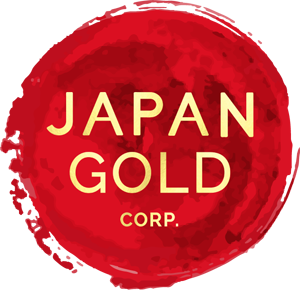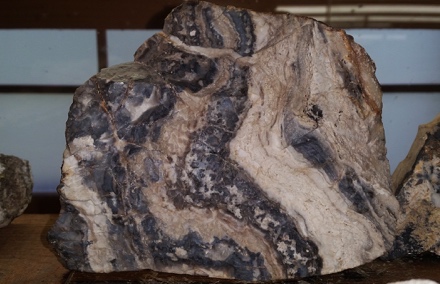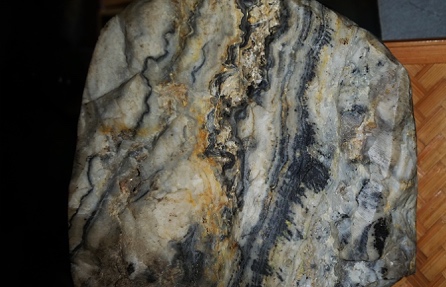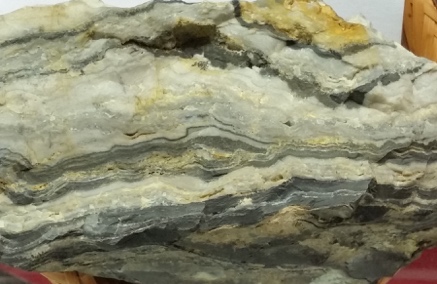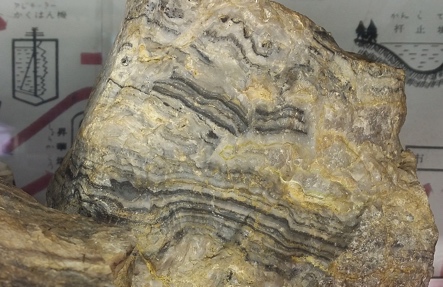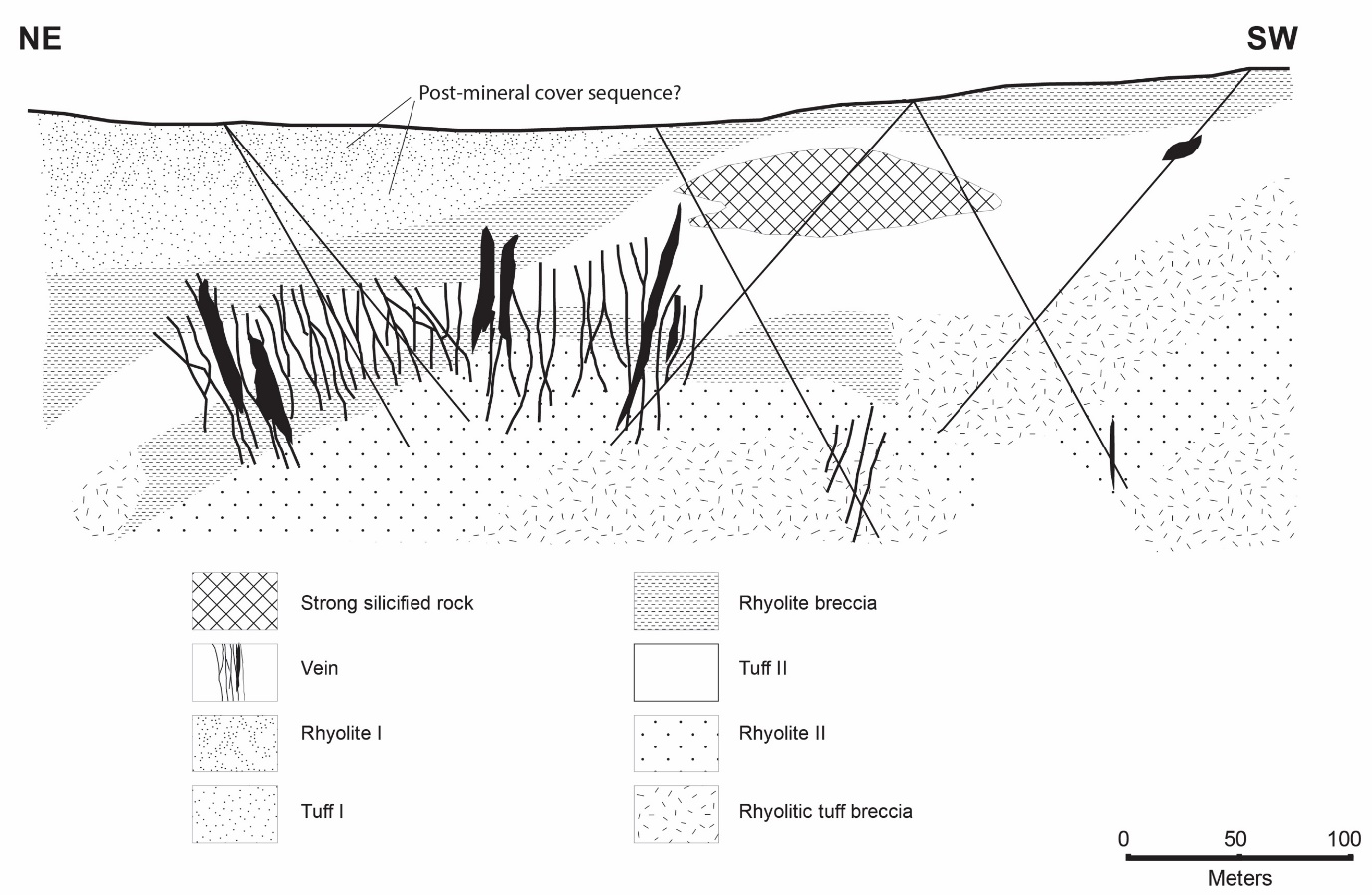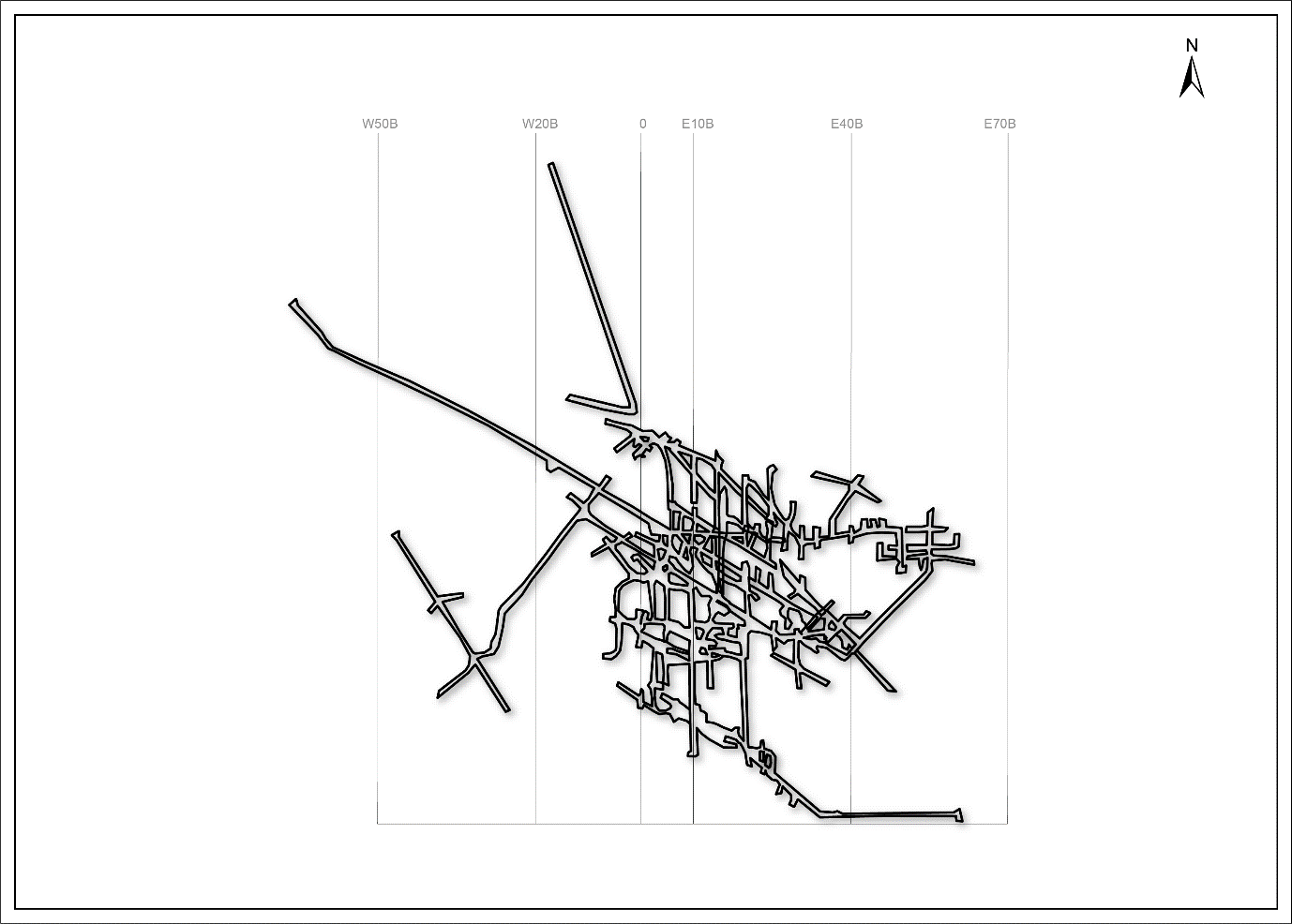Geology and Mineralisation
The gold mineralization styles at the Hakuryu Project are classified as rift-related, low-sulfidation epithermal. Mineralization is typically associated with quartz-carbonate-chalcedony-adularia-clay in silicified and veined- or brecciated-structures, including dark sulfidic material, termed ginguro bands. Veins display colloform-banding, cockade, comb textures and quartz pseudomorphs after calcite (‘bosa’ texture, indicative of fluid boiling zones).
Examples of Konomai epithermal Au-Ag ore located in the Konomai Mine Museum (courtesy of Steve Garwin).
The gold-silver veins of the Konomai deposit group cover 16 km (north-south) by 7 km (east-west); the southern 6 km of the strike-length of this vein system lies within the Hakuryu tenement. The Konomai No. 5 vein, about four kilometres north of the tenement, was one of the larger exploited veins. The No. 5 vein is characterized by a strike length of 2.1 km, down-dip extent of 560 m, an average width of 10 m and life of mine average grades of 5.8 g/t Au and 111 g/t Ag. Maximum vein widths reach up to 35 m, where the vein is reportedly the richest2.
Sumitomo documented vein types2 in the Hakuryu Project include: 1) poly-episodic and sheeted fissure veins (Motoyama and Hakuryu); 2) vein stockworks (Fujishima); and 3) hydrothermal breccias and potential sinter (Hakuryu). The vein lodes commonly fill faults that strike northeasterly- to easterly, dip steeply and lie along a northerly trending structural corridor. Bonanza grades (20 to 40 g/t Au) were mined at vein-fault intersections and the intersections of the vein zones with the northerly structural trend.
The Motoyama group of veins are distributed along the northeastern boundary of the project. The main deposit extends about 650 m along a west-northwesterly strike and is continuous for up to 240 m down-dip. The vein array has a sigmoidal pattern in plan, expressed by westerly- and northwesterly-trending vein orientations. A quartz-adularia vein, characterized by an average width of about 3.5 m and a maximum width of 10 m contains 1 to 5 cm-wide ‘ginguro’ bands of dark grey silver sulphides. Ore minerals are mainly electrum and argentite with polybasite, pyrargyrite and pyrite. Minor chalcopyrite, sphalerite and galena are also present. The gold-silver ratios range from 1:4-6, which are the lowest in the Konomai group deposits2.
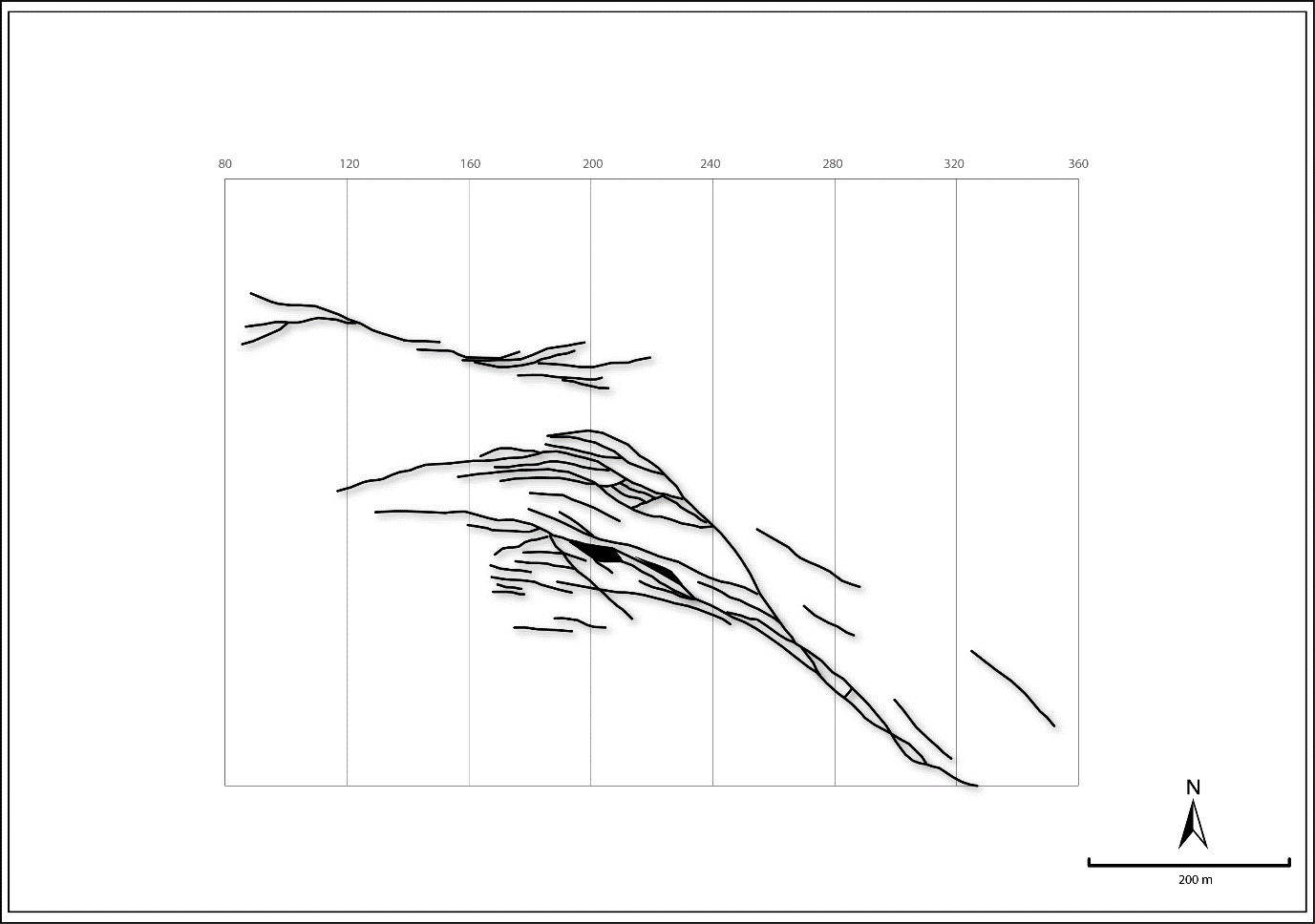 Plan view of the vein array which defines the Motoyama main deposit2.
Plan view of the vein array which defines the Motoyama main deposit2.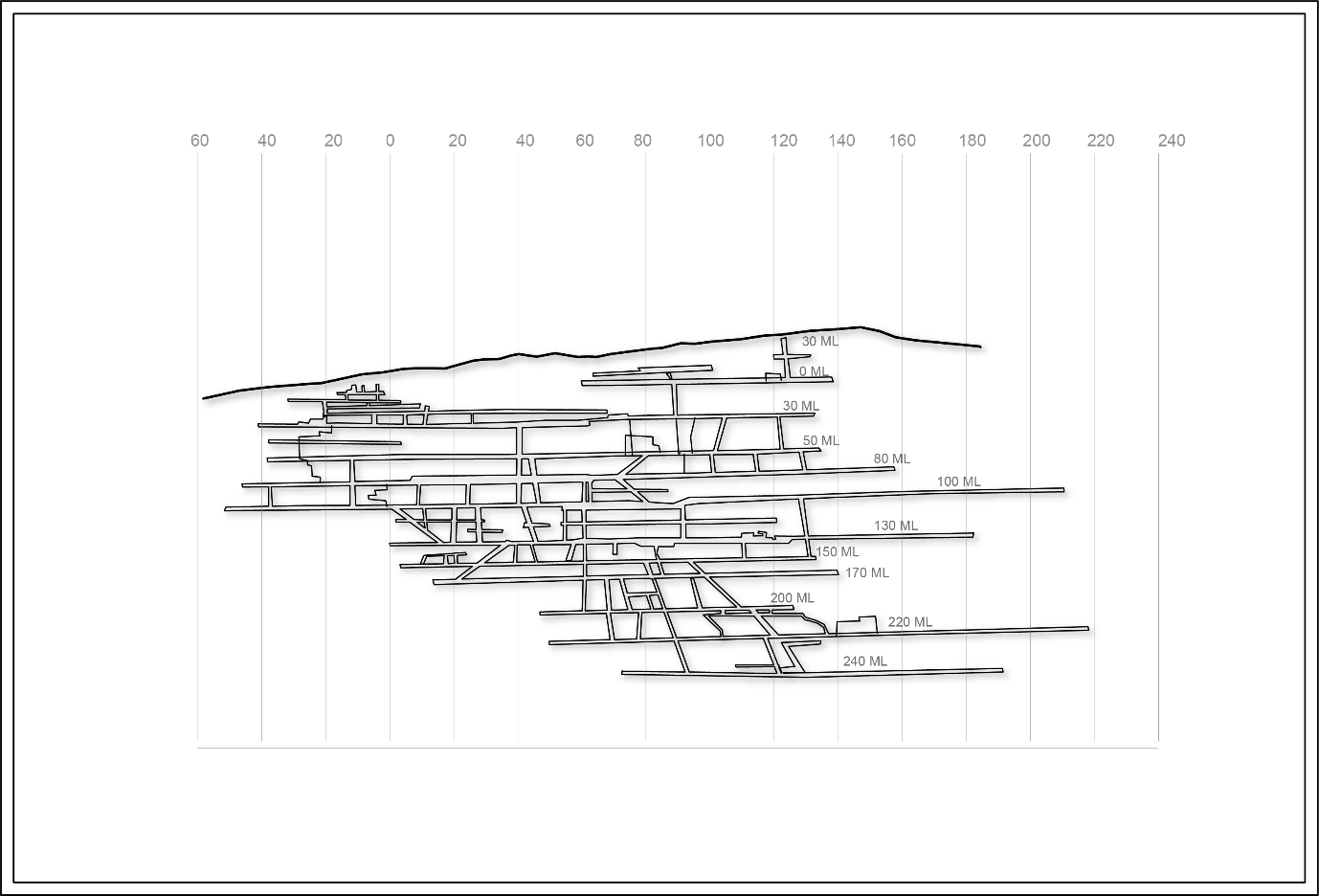 Cross-section showing underground workings of the Motoyama main deposit2.
Cross-section showing underground workings of the Motoyama main deposit2.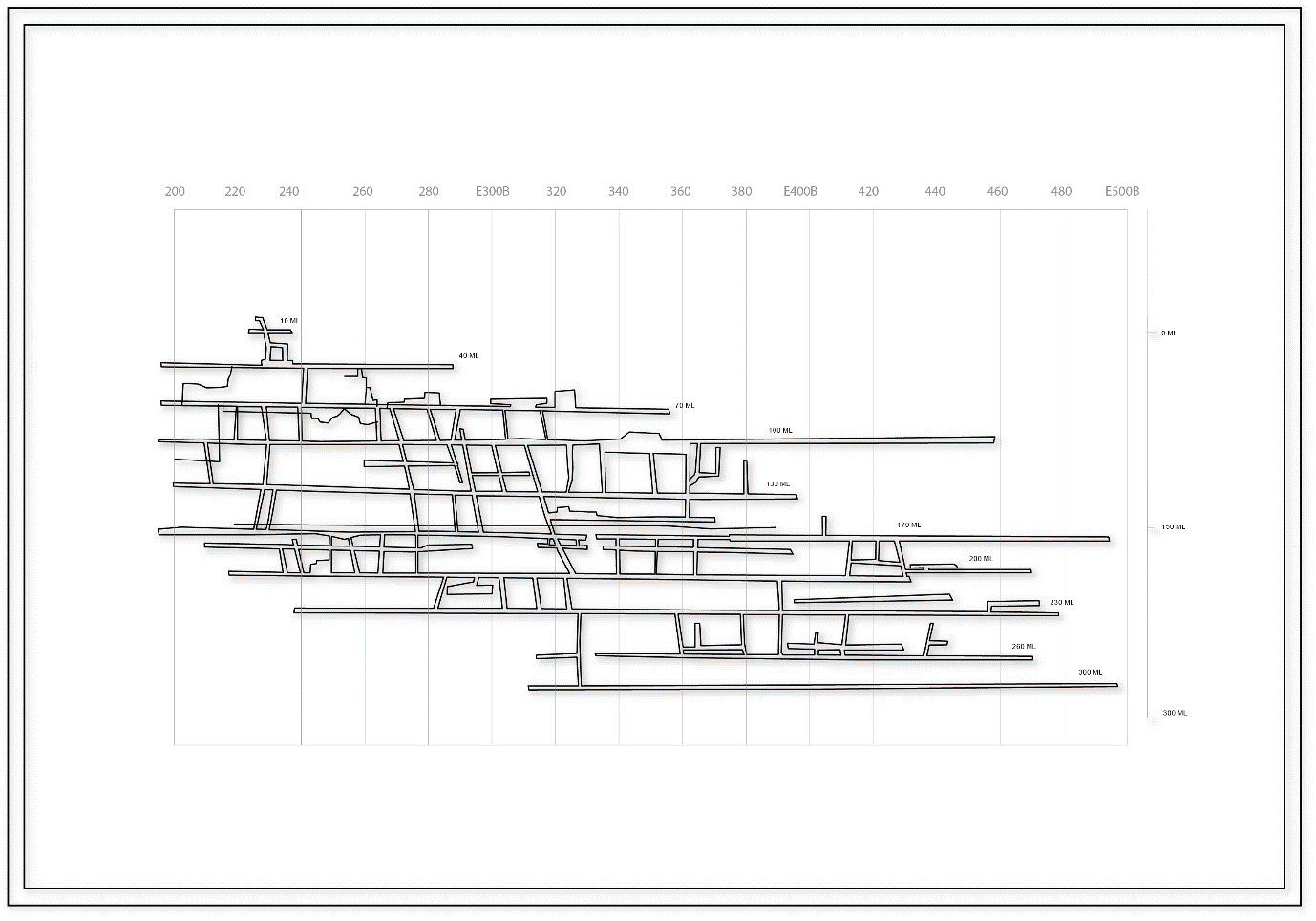 Cross-section of the underground workings in the Motoyama No. 2 deposit2.
Cross-section of the underground workings in the Motoyama No. 2 deposit2.
The Fujishima vein group lies in the central part of the project. The Fujishima vein and associated stockwork zone does not form outcrop and is concealed beneath post-mineral(?) rhyolite lava and tuff. Drilling below silicification and quartz boulder float accumulations led to discovery in 1954. The Fujishima deposit has a different form than the other vein lodes in the district. At Fujishima, a network array of veins is distributed over a 250 m by 200 m zone, with a known down-dip extent of 90 m . The vein array is partially controlled by gently dipping rhyolitic breccia horizons, which form a favourable brittle host. Westerly-, west-northwesterly- and north-northwesterly-strikes are common, with the richest portions of the deposit are located where these three strike-directions converge towards an east-west orientation . Gold values in the Fujishima deposit reach 20 to 50 g/t Au locally with bonanza grades controlled by east-west vein-segments developed between N30-40° W- and N60° W-trending shear structures2.

